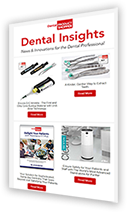Customizing Treatment for Long-Term Health
Research plays a role almost every day as we create treatment plans and make care recommendations to our patients. However, sometimes we need to see proof of that research manifested in our practices for it to really hit home. This particular case, which combines many variables, is an excellent example of that.
A Case Worth Sharing
In 2006, the patient presented with a panoramic x-ray taken in 2003 and several years’ worth of bitewings from his previous dentist. His initial exam revealed severe periodontitis and extremely poor homecare. However, he had an overwhelming desire to save as many of his teeth as possible. As you look at the initial panoramic x-ray, and given his extremely poor oral hygiene, one can understand why his previous dentist recommended full-mouth extractions (Figure 1).
I learned 2 key lessons—fully supported by the literature—from this case. The first is that teeth can survive with substantial periodontal loss far longer than we believe. The second is that implants placed in mouths with moderate-to-severe periodontitis coupled with poor homecare and poor maintenance have a guarded prognosis.
The initial treatment we performed included bacterial testing, full-mouth scaling and root planing with laser therapies, isolated periodontal surgeries (nonLANAP), and extractions of teeth Nos. 3, 14, 15, 17, 31, and 32. We placed implants in the teeth Nos. 14 and 15 positions. Within 2 years, bone loss was evident around the implants and the patient’s homecare had not improved (Figure 2). When we performed another bacterial test, it was clear that his periodontium was under continued attack and we had to consider the potential systemic effects of his periodontal disease.
Flash forward 15 years after the patient fi rst entered the offi ce, and 4 years after he turned around his homecare: His dentition is relatively stable despite the substantial bone loss. So, what changed? In 2017, he committed to power brushing (with the Oral-B iO), water flossing (with the Philips AirFloss), and daily use of the Perio Protect Method with Perio Tray to deliver medication directly to the periodontal tissue. For years, the patient had been on 3-month recalls, but clearly 1 hour of lasers and ultrasonics every 90 days wasn’t nearly enough to deal with his ongoing microbial challenges.
The patient’s most recent cone beam computed tomography images show extensive bone loss (Figures 3–4), but intraoral photos show that his dentition is plaque-free (Figures 5–7). Clinically, he has minimal bleeding on probing, minimal mobility, and his homecare includes morning Perio Protect Trays for 10 to 15 minutes (during his shower) followed by 2 minutes of power brushing and then water flossing. His evening homecare includes power brushing and water flossing.
Customize for Long-Term Results
This case offered several conclusions: 1) Before placing implants, a stable periodontium is essential; 2) Maintenance requires far more than coming into the dental practice for 3- or 4-month appointments. It must be customized and patient-centered to optimize long-term results; and 3) Even with substantial bone loss, teeth have a far longer life span (as per the literature) if a patient has a successful maintenance program. For many of our implant patients, a successful maintenance program includes daily 10- to 15-minute Perio Protect Tray use with the goal of minimizing peri-mucositis.





